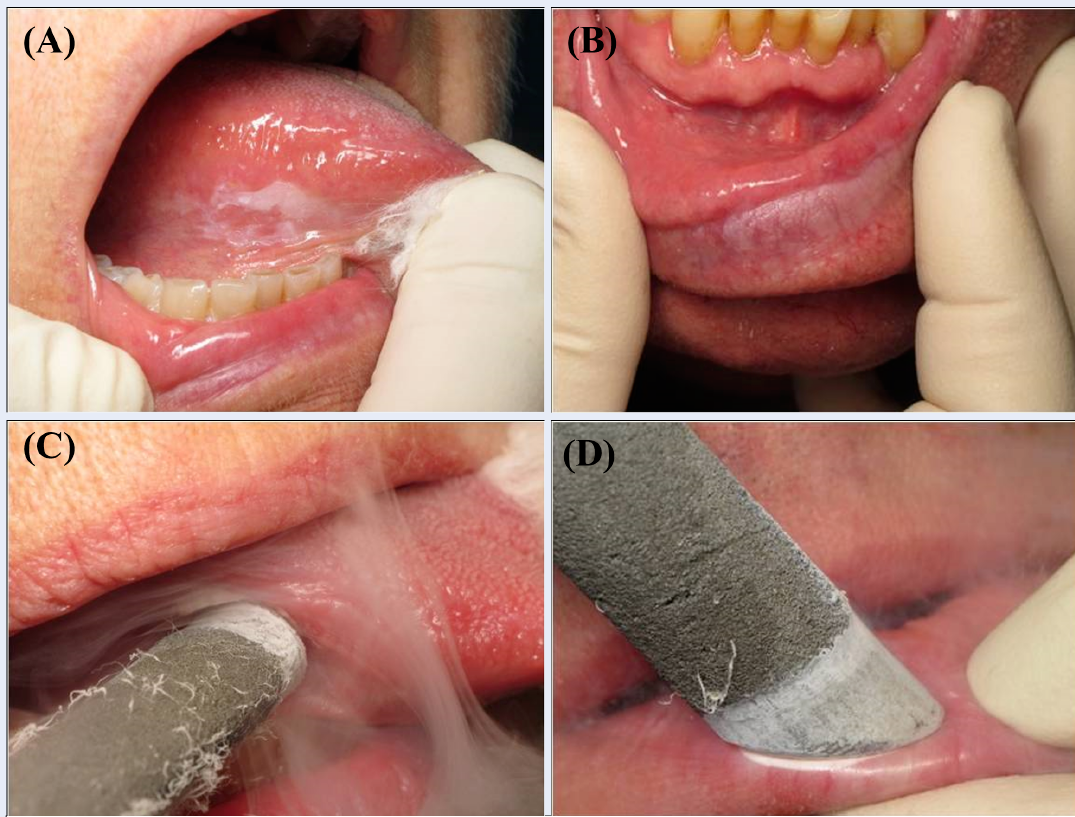Effectiveness of Combined Application of Cryosurgical Method and Local Ozone Therapy in Patients with Oral Leukoplakia
DOI:
https://doi.org/10.15419/bmrat.v10i1.787Keywords:
leukoplakia, oral cavity, ozone, pain syndrome, superoxide dismutaseAbstract
Introduction: The physical and chemical properties and biological effects of ozone that determine bactericidal, anti-inflammatory, antioxidant and immunocorrective effects are a direct prerequisite for the use of ozone therapy in the postoperative period of treatment of oral leukoplakia. This study aimed to establish the effectiveness of the combined use of cryosurgery and local ozone therapy in the complex treatment of patients with oral mucosa leukoplakia.
Methods: Thirty-three patients (14 men and 19 women) with oral mucosa leukoplakia (verrucose form) aged 30 to 75 years old were examined. Cryodestruction of the lesion was carried out with liquid nitrogen using autonomous cryoapplicators made of porous titanium nickelide. After the treatment, all patients, depending on the type of postoperative treatment, were divided into 2 groups. In the main group, ozonated olive oil was additionally used by applying it to the mucous membrane around the focus of destruction. Patients in the comparison group were prescribed traditional anti-inflammatory treatment. A score assessment of clinical signs (pain syndrome, mucous membrane condition in the surgery area, nature of the wound discharge, and epithelization degree) at different stages of the postoperative period was performed. An enzyme immunoassay was used to assess the activity of superoxide dismutase.
Results: In the main group, on the background of ozone therapy, there was a statistically significant decrease in the intensity of pain syndrome compared to the comparison group at all stages of the postoperative period: on the 5th day, this indicator was half as much as in the comparison group, and on the 14th day, pain completely disappeared (p < 0.05). Analysis of the state of the mucosa around the operative intervention area, as well as characteristics of the surrounding tissue edema, also confirmed a significant reduction in indicators against the comparison group at all stages of postoperative intervention, with complete recovery on the 14th day (p < 0.05). The highest rates of wound surface cleanup, granulation and epithelization were seen in the main group, with favorable ozone exposure on the 10th day relative to the data of the initial period. A significant difference relative to the comparison group was registered on the 7th, 10th and 14th day. It was revealed that the activity of salivary superoxide dismutase (SOD) showed a statistically significant increase from the first day in the patients of the main group, which remained on the 10th day, while the maximum SOD activity was registered on the 5th day after the surgery. The main group patients showed increased SOD activity at all stages of the study as compared to the comparison group (p < 0.05).
Conclusion: The study showed that patients with verrucous leukoplakia of the oral mucosa were more effectively treated using postoperative cryotherapy management alongside local ozone therapy.

Published
Issue
Section
License
Copyright The Author(s) 2017. This article is published with open access by BioMedPress. This article is distributed under the terms of the Creative Commons Attribution License (CC-BY 4.0) which permits any use, distribution, and reproduction in any medium, provided the original author(s) and the source are credited.
